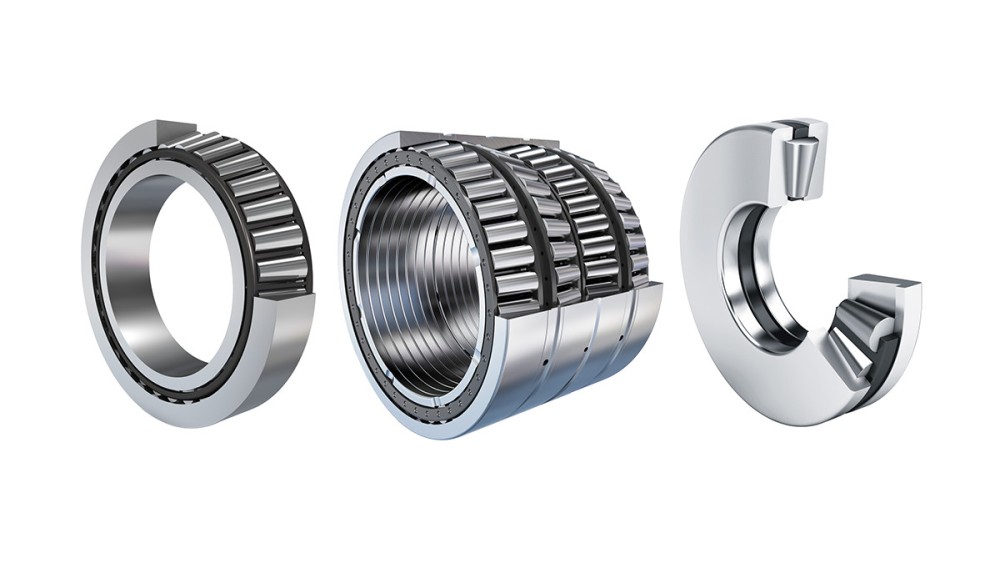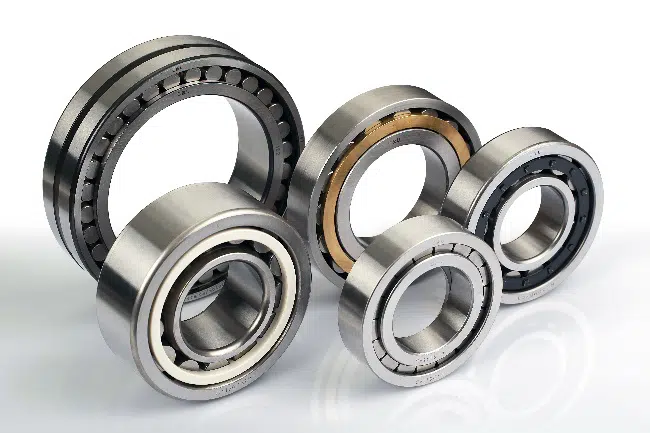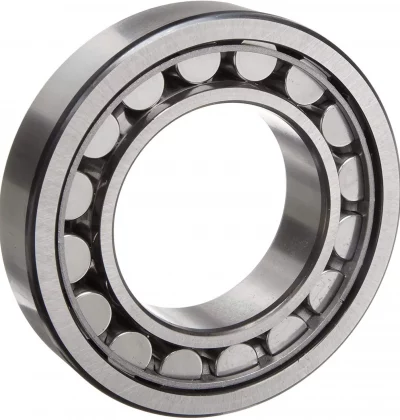Can you Explain the Concept of Bearing Clearance in Tapered Roller Bearings?
Bearing clearance, also known as internal clearance, refers to the space or gap between the various components of a tapered roller bearing when it is not under load. This clearance exists to accommodate the thermal expansion of the bearing components, ensure proper lubrication, and prevent excessive interference during operation. Here’s how bearing clearance works in tapered roller bearings:
- Thermal Expansion:
As tapered roller bearings operate, they generate heat due to friction and loading. This heat causes the bearing components, including the inner and outer rings, rollers, and cage, to expand. Bearing clearance provides the necessary space for these components to expand without causing binding or excessive load on the rolling elements.
- Lubrication Film:
The lubricant within the bearing forms a thin film between the rolling elements and raceways. Bearing clearance ensures that the rolling elements can move smoothly within this lubrication film, reducing friction and wear.
- Operating Conditions:
Bearing clearance affects the behavior of the bearing under different operating conditions. Excessive clearance can lead to vibration, noise, and reduced load-carrying capacity, while insufficient clearance may result in increased friction, heat generation, and premature failure.
- Types of Clearance:
Tapered roller bearings can have various types of clearance, including radial clearance (between the rollers and raceways) and axial clearance (along the bearing axis). The choice of clearance depends on the application’s requirements and the desired balance between load capacity and internal stress.
- Preload vs. Clearance:
Preload, which is the application of a controlled axial force, eliminates internal clearance and optimizes the distribution of load between rolling elements. In contrast, bearing clearance provides the necessary space for thermal expansion and lubrication, albeit at the cost of increased play.
- Application-Specific Considerations:
The optimal bearing clearance varies depending on factors such as the application’s operating temperature, speed, and load magnitude. Engineers carefully select the appropriate clearance to ensure optimal bearing performance.
- Measuring Clearance:
Bearing clearance can be measured using specialized instruments or techniques that assess the gap between components when the bearing is not under load.
Proper bearing clearance is crucial to maintaining optimal performance, minimizing wear, and preventing premature failure in tapered roller bearings. It is a critical factor that engineers consider when selecting and designing bearings for specific applications.
Are there different cage materials commonly used in cylindrical roller bearings?
Yes, there are different cage materials commonly used in cylindrical roller bearings. The cage, also known as a retainer or separator, is a critical component that holds the cylindrical rollers in position and maintains their proper spacing. The choice of cage material depends on various factors such as application requirements, operating conditions, and the desired balance between strength, durability, and cost. Let’s explore some of the commonly used cage materials in cylindrical roller bearings:
- Steel:
Steel cages are widely used in cylindrical roller bearings due to their excellent strength, durability, and wear resistance. Steel cages can withstand high operating temperatures and are suitable for applications with heavy loads and high-speed operation. The steel cages are typically made from low carbon steel, and in some cases, high-strength brass-coated steel or other alloyed steels are used for enhanced performance in demanding environments.
- Brass:
Brass cages offer good strength, high corrosion resistance, and excellent heat dissipation properties. They are commonly used in cylindrical roller bearings for applications that require resistance to harsh operating conditions, such as high temperatures or corrosive environments. Brass cages are particularly suitable for slow to moderate speed applications where their excellent thermal conductivity can help dissipate heat effectively.
- Polyamide (Nylon):
Polyamide cages, often referred to as nylon cages, are lightweight, corrosion-resistant, and have good wear properties. They offer low friction and allow for smooth rolling motion of the cylindrical rollers. Polyamide cages are commonly used in applications where reducing weight and inertia are important considerations, such as automotive and aerospace industries. They are also suitable for applications with moderate speeds and operating temperatures.
- Phenolic Resin:
Phenolic resin cages are known for their high strength, low friction, and excellent dimensional stability. These cages provide good resistance to wear, chemicals, and heat. Phenolic resin cages are commonly used in high-speed cylindrical roller bearings where low cage weight and inertia are crucial for reducing friction and maintaining stable operation at high rotational speeds.
- Other Materials:
In addition to the above-mentioned materials, other cage materials such as aluminum alloys, stainless steel, and engineered plastics may be used in specific applications. Aluminum alloy cages offer lightweight properties and good corrosion resistance, making them suitable for certain industries. Stainless steel cages provide high corrosion resistance and are used when the bearing operates in aggressive environments. Engineered plastics, such as PEEK (polyether ether ketone) or PTFE (polytetrafluoroethylene), are used for their self-lubricating properties, chemical resistance, and low friction characteristics.
The choice of cage material depends on factors such as load, speed, temperature, lubrication, and environmental conditions. Bearing manufacturers carefully select the appropriate cage material to ensure optimal performance, longevity, and reliability of the cylindrical roller bearing in a specific application.
How do cylindrical roller bearings differ from other types of roller bearings?
Cylindrical roller bearings possess distinct characteristics that set them apart from other types of roller bearings. Let’s examine the key differences between cylindrical roller bearings and other common roller bearing types:
- Design and Structure:
Cylindrical roller bearings feature cylindrical rollers that have a high length-to-diameter ratio. This design allows them to accommodate high radial loads and moderate thrust loads. In contrast, other types of roller bearings, such as spherical roller bearings or tapered roller bearings, have different roller shapes and configurations tailored for specific load and application requirements.
- Load Capacity:
Cylindrical roller bearings excel in handling radial loads. Their cylindrical roller arrangement and large contact area with the raceways enable them to distribute loads evenly along the rollers’ length. This characteristic makes cylindrical roller bearings suitable for applications where the primary load is radial. In comparison, other roller bearing types may be better suited for applications with different load orientations or combinations of radial and axial loads.
- Thrust Load Capability:
While cylindrical roller bearings can accommodate moderate axial loads, they are primarily designed for radial load-carrying capacity. On the other hand, thrust roller bearings, such as spherical roller thrust bearings or tapered roller thrust bearings, are specifically designed to handle predominantly axial loads. These thrust bearings have different roller arrangements and structures optimized for axial load resistance.
- Internal Clearance:
Cylindrical roller bearings offer a range of internal clearances, which is the space between the rolling elements and raceways when no external load is applied. The internal clearance affects factors such as running accuracy, thermal expansion, and the ability to accommodate misalignment or axial displacement. In contrast, other roller bearing types may have different clearance options or incorporate specific features, such as preloading, to optimize performance in their respective applications.
- Application Diversity:
Cylindrical roller bearings find extensive use in various machinery applications, including electric motors, gearboxes, pumps, and compressors. However, other roller bearing types have their own advantages and are commonly employed in specific industries or applications. For instance, needle roller bearings are suitable for applications with limited radial space, while crossed roller bearings are commonly used in precision machinery that requires high positioning accuracy.
- Operating Speed:
Cylindrical roller bearings can operate at high speeds, depending on their design and internal clearance. Manufacturers provide speed ratings and guidelines to ensure proper selection and operation within the bearing’s speed limits. Other roller bearing types may have different speed capabilities based on their specific design features, such as the shape of the rollers, cage design, or lubrication requirements.
Understanding the differences between cylindrical roller bearings and other types of roller bearings is crucial for selecting the appropriate bearing for a given application. Factors such as load requirements, load orientation, speed, space limitations, and environmental conditions should be carefully considered to ensure optimal bearing performance and longevity.
editor by CX 2024-04-03




